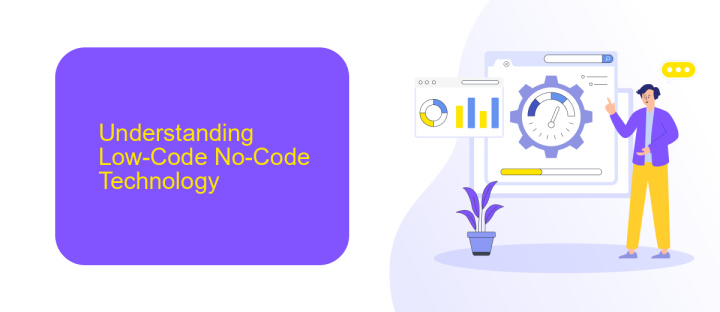What is Low-Code No-Code Technology
Low-Code No-Code technology is revolutionizing the way applications are developed, enabling individuals with minimal coding experience to create sophisticated software solutions. By using visual interfaces and pre-built templates, this innovative approach significantly accelerates the development process, reduces costs, and democratizes software creation. In this article, we will explore the fundamentals of Low-Code No-Code platforms and their impact on the tech industry.
Introduction
The rise of Low-Code No-Code technology has revolutionized the way businesses develop and deploy applications. This innovative approach allows users with minimal programming skills to create complex applications through intuitive visual interfaces. As a result, organizations can accelerate their digital transformation efforts, reduce development costs, and improve operational efficiency.
- Faster development cycles
- Reduced dependency on IT departments
- Enhanced collaboration between business and IT teams
- Improved agility and scalability
One of the key benefits of Low-Code No-Code platforms is their ability to integrate seamlessly with various third-party services. For instance, ApiX-Drive enables users to connect and automate workflows between different applications without writing a single line of code. This capability not only streamlines processes but also ensures that data flows smoothly across systems, enhancing overall productivity. As a result, businesses can focus more on innovation and less on technical complexities, driving growth and success in the digital age.
Understanding Low-Code No-Code Technology

Low-Code No-Code technology represents a paradigm shift in software development, allowing users with minimal coding knowledge to create applications. This approach utilizes visual development environments where users can drag and drop components to build software, significantly reducing the time and technical expertise required. By abstracting the underlying code, these platforms enable rapid prototyping and deployment, making it accessible to a broader audience, including business analysts and other non-developers.
One of the key advantages of Low-Code No-Code platforms is their ability to integrate seamlessly with various services and APIs. For instance, ApiX-Drive is a service that facilitates easy integration between different applications, automating workflows without the need for extensive coding. This capability allows organizations to streamline operations and enhance productivity by connecting disparate systems effortlessly. As a result, businesses can focus on innovation and growth rather than getting bogged down by technical complexities.
Benefits of Low-Code No-Code

Low-Code No-Code technology offers numerous benefits that can significantly enhance the efficiency and effectiveness of software development. By enabling users to create applications with minimal coding knowledge, it democratizes the development process and accelerates project timelines.
- Speed and Efficiency: Development cycles are drastically reduced, allowing for rapid prototyping and faster time-to-market.
- Cost-Effective: Reduces the need for extensive coding expertise, thereby lowering development and maintenance costs.
- Accessibility: Empowers non-technical users to build and modify applications, fostering innovation and collaboration across departments.
- Flexibility: Easily integrates with existing systems and third-party services. For instance, platforms like ApiX-Drive facilitate seamless integration, enabling automated workflows and data synchronization.
- Scalability: Offers the ability to scale applications as business needs evolve without extensive redevelopment efforts.
In summary, Low-Code No-Code technology is transforming the way organizations approach software development. By providing tools that are accessible, cost-effective, and efficient, it empowers a broader range of individuals to contribute to the digital transformation journey. As a result, businesses can innovate faster and respond more agilely to market demands.
Use Cases for Low-Code No-Code

Low-code and no-code technologies have revolutionized the way businesses approach software development, making it accessible to a broader range of users. These platforms empower non-technical users to create, modify, and deploy applications with minimal coding knowledge.
One of the primary use cases for low-code and no-code platforms is rapid prototyping. Businesses can quickly build and test prototypes without the need for extensive coding, allowing for faster iteration and innovation. Another common use case is workflow automation, where organizations streamline their operations by automating repetitive tasks.
- Business Process Management (BPM)
- Customer Relationship Management (CRM)
- Data Integration and Migration
- Internal Tools and Dashboards
Additionally, low-code and no-code platforms are invaluable for setting up integrations between various systems. Services like ApiX-Drive enable users to connect different applications and automate data flows without needing to write complex code. This simplifies the integration process and enhances operational efficiency, making it easier for businesses to adapt to changing needs.
Future of Low-Code No-Code
The future of low-code no-code technology looks incredibly promising as businesses increasingly seek rapid and cost-effective solutions for software development. These platforms empower non-technical users to create sophisticated applications, reducing dependency on traditional coding. This democratization of technology allows organizations to innovate faster and adapt to market changes more swiftly. As artificial intelligence and machine learning continue to evolve, we can expect even more advanced features integrated into low-code no-code platforms, further enhancing their capabilities.
Moreover, the integration of various services will become more seamless with tools like ApiX-Drive, which simplifies the process of connecting different applications and automating workflows. This will enable businesses to streamline operations and improve efficiency without needing extensive technical expertise. As more industries recognize the value of low-code no-code solutions, the demand for such platforms will continue to grow, driving further innovation and making advanced technology accessible to a broader audience.
FAQ
What is Low-Code No-Code Technology?
Who can benefit from Low-Code No-Code platforms?
What are some common use cases for Low-Code No-Code platforms?
How secure are Low-Code No-Code platforms?
Can Low-Code No-Code platforms integrate with existing systems?
Apix-Drive will help optimize business processes, save you from a lot of routine tasks and unnecessary costs for automation, attracting additional specialists. Try setting up a free test connection with ApiX-Drive and see for yourself. Now you have to think about where to invest the freed time and money!

